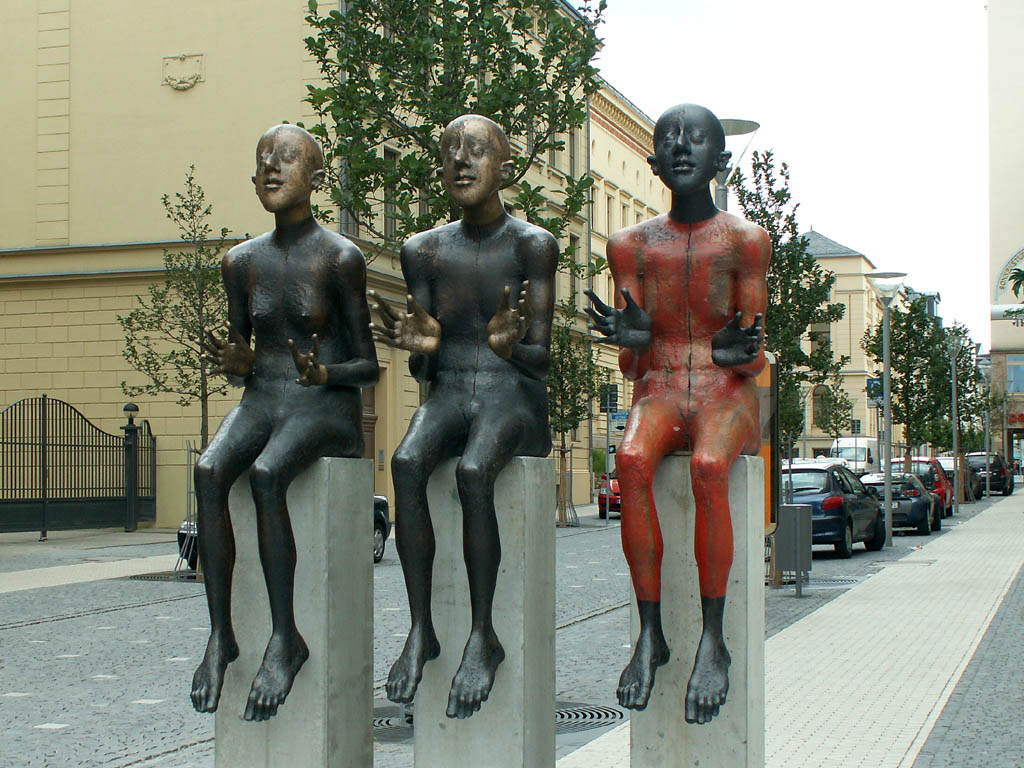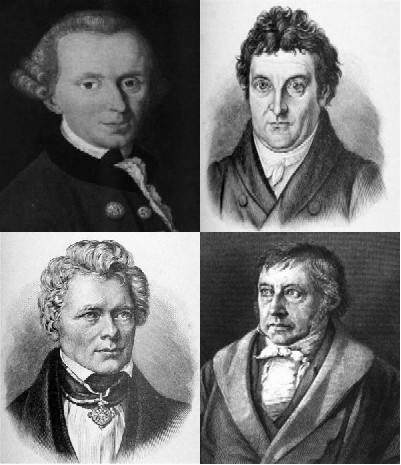|
German Student Corps
Corps (or Korps; "''das ~''" ('' n''), (''sg.''), (''pl.'')) are the oldest still-existing kind of '' Studentenverbindung'', Germany's traditional university corporations; their roots date back to the 15th century. The oldest corps still existing today was founded in 1789. Its members are referred to as corps students (''Corpsstudenten''). The corps belong to the tradition of student fraternities which wear couleur and practice academic fencing. The corps are organized in two federations, the ''Kösener Senioren-Convents-Verband'' (''KSCV'') and the ''Weinheimer Senioren-Convent'' (''WSC''). Together, they comprise 162 Corps throughout Germany, Austria, Belgium, Estonia, Latvia, Hungary, Switzerland and Lithuania. The German Student Corps were traditionally recruited from the nobility, royalty, and social elite, and are traditionally viewed as more aristocratic and elitist than other German student fraternities such as the Catholic Cartellverband and the Burschenscha ... [...More Info...] [...Related Items...] OR: [Wikipedia] [Google] [Baidu] |
Cartellverband
The Union of Catholic German Student Fraternities (german: Cartellverband der katholischen deutschen Studentenverbindungen or ''Cartellverband'' (CV)) is a German umbrella organization of Catholic male student fraternities (Studentenverbindung). History Foundation During the period of 19th century in Germany called the Kulturkampf, the Prussian state tried to reduce the influence of the Catholic Church. As a result of this, many Catholic organizations were founded in order to withstand this pressure by forming a single front. Catholic students of several universities in Germany, Austria and Switzerland formed Catholic fraternities. These Catholic fraternities were the successors of informal Catholic clubs, founded by students of theology. They were formed according to the historic examples of the already existing fraternities, like wearing couleur, rules of behaviour, lifelong membership and democratic organization, but added as main principle the foundation upon the Catholic ... [...More Info...] [...Related Items...] OR: [Wikipedia] [Google] [Baidu] |
Burschenschaften
A Burschenschaft (; sometimes abbreviated in the German ''Burschenschaft'' jargon; plural: ) is one of the traditional (student associations) of Germany, Austria, and Chile (the latter due to German cultural influence). Burschenschaften were founded in the 19th century as associations of university students inspired by liberal and nationalistic ideas. They were significantly involved in the March Revolution and the unification of Germany. After the formation of the German Empire in 1871, they faced a crisis, as their main political objective had been realized. So-called were established, but these were dissolved by the Nazi regime in 1935/6. In West Germany, the were re-established in the 1950s, but they faced a renewed crisis in the 1960s and 1970s, as the mainstream political outlook of the German student movement of that period swerved to the radical left. Roughly 160 exist today in Germany, Austria and Chile. History Origins The very first one, called ("original "), ... [...More Info...] [...Related Items...] OR: [Wikipedia] [Google] [Baidu] |
Latinism
A Latinism (from lat-med, Latinismus) is a word, idiom, or structure in a language other than Latin that is derived from, or suggestive of, the Latin language. The Term ''Latinism'' refers to those loan words that are borrowed into another language directly from Latin (especially frequent among inkhorn terms); English has many of these, as well. There are many Latinisms in English, and other (especially European) languages. Lexical Latinism On the basic level of particular words and lexemes, creation and adoption of Latinisms has a long history, dating back to the ancient times. Early lexical Latinisms are attested in various languages that came into contact with Latin language during the expansion of ancient Roman culture. The same process continued during the Middle Ages, and acquired new forms in modern times under the influence of scientific terminology, largely based on the Scientific Latin. As a particular subgroup of lexical Latinisms, various onomastic Latinisms are ... [...More Info...] [...Related Items...] OR: [Wikipedia] [Google] [Baidu] |
Dueling Scars
Dueling scars (german: link=no, Schmisse) have been seen as a "badge of honour" since as early as 1825. Known variously as " scars", "the bragging scar", "smite", "" or "", dueling scars were popular amongst upper-class Austrians and Germans involved in academic fencing at the start of the 20th century. Being a practice amongst University students, it was seen as a mark of their class and honour, due to the status of dueling societies at German and Austrian universities at the time.DeMello, Margo (2007). ''Encyclopedia of body adornment'' Greenwood Publishing Groupp. 237 . The practice of dueling and the associated scars was also present to some extent in the German military. Foreign tourists visiting Germany in the late 19th century were shocked to see the students, generally with their , at major German universities such as Heidelberg, Bonn, or Jena with facial scars – some older, some more recent, and some still wrapped in bandages. The sport of academic fencing at the time ... [...More Info...] [...Related Items...] OR: [Wikipedia] [Google] [Baidu] |
Academic Fencing
Academic fencing (german: link=no, akademisches Fechten) or is the traditional kind of fencing practiced by some student corporations () in Germany, Austria, Switzerland, Latvia, Estonia, and, to a minor extent, in Belgium, Lithuania, and Poland. It is a traditional, strictly regulated épée fight between two male members of different fraternities with sharp weapons. The German technical term (from Latin meaning 'dimension') in the 16th century referred to the specified distance between each of the fencers. Technique Modern academic fencing, the ''Mensur'', is neither a duel nor a sport. It is a traditional way of training and educating character and personality; thus, in a mensur bout, there is neither winner nor loser. In contrast to sports fencing, the participants stand their ground at a fixed distance. At the beginning of the tradition, duelers wore only their normal clothing (as duels sometimes would arise spontaneously) or light-cloth armor on the arm, torso, a ... [...More Info...] [...Related Items...] OR: [Wikipedia] [Google] [Baidu] |
Toleration
Toleration is the allowing, permitting, or acceptance of an action, idea, object, or person which one dislikes or disagrees with. Political scientist Andrew R. Murphy explains that "We can improve our understanding by defining "toleration" as a set of social or political practices and "tolerance" as a set of attitudes." ''Random House Dictionary'' defines tolerance as "a fair, objective, and permissive attitude toward those whose opinions, beliefs, practices, racial or ethnic origins, etc., differ from one's own". Both these concepts inherently contain the idea of alterity, the state of ''otherness.'' Additional choices of how to respond to the "other," beyond toleration, do exist. Therefore, in some instances, toleration has been seen as ‘a flawed virtue’ because it concerns acceptance of things that were better overcome. Toleration cannot, therefore, be defined as a universal good, and many of its applications and uses remain contested. Religious toleration may signify "n ... [...More Info...] [...Related Items...] OR: [Wikipedia] [Google] [Baidu] |
United States
The United States of America (U.S.A. or USA), commonly known as the United States (U.S. or US) or America, is a country primarily located in North America. It consists of 50 states, a federal district, five major unincorporated territories, nine Minor Outlying Islands, and 326 Indian reservations. The United States is also in free association with three Pacific Island sovereign states: the Federated States of Micronesia, the Marshall Islands, and the Republic of Palau. It is the world's third-largest country by both land and total area. It shares land borders with Canada to its north and with Mexico to its south and has maritime borders with the Bahamas, Cuba, Russia, and other nations. With a population of over 333 million, it is the most populous country in the Americas and the third most populous in the world. The national capital of the United States is Washington, D.C. and its most populous city and principal financial center is New York City. Paleo-Americ ... [...More Info...] [...Related Items...] OR: [Wikipedia] [Google] [Baidu] |
Fraternities
A fraternity (from Latin ''frater'': "brother"; whence, "brotherhood") or fraternal organization is an organization, society, club or fraternal order traditionally of men associated together for various religious or secular aims. Fraternity in the Western concept developed in the Christian context, notably with the religious orders in the Catholic Church during the Middle Ages. The concept was eventually further extended with medieval confraternities and guilds. In the early modern era, these were followed by fraternal orders such as Freemasons and Odd Fellows, along with gentlemen's clubs, student fraternities, and fraternal service organizations. Members are occasionally referred to as a ''brother'' or – usually in a religious context – ''Frater'' or ''Friar''. Today, connotations of fraternities vary according to context including companionships and brotherhoods dedicated to the religious, intellectual, academic, physical, or social pursuits of its members. Additionall ... [...More Info...] [...Related Items...] OR: [Wikipedia] [Google] [Baidu] |
College
A college (Latin: ''collegium'') is an educational institution or a constituent part of one. A college may be a degree-awarding tertiary educational institution, a part of a collegiate or federal university, an institution offering vocational education, or a secondary school. In most of the world, a college may be a high school or secondary school, a college of further education, a training institution that awards trade qualifications, a higher-education provider that does not have university status (often without its own degree-awarding powers), or a constituent part of a university. In the United States, a college may offer undergraduate programs – either as an independent institution or as the undergraduate program of a university – or it may be a residential college of a university or a community college, referring to (primarily public) higher education institutions that aim to provide affordable and accessible education, usually limited to two-year as ... [...More Info...] [...Related Items...] OR: [Wikipedia] [Google] [Baidu] |
Conservatism
Conservatism is a cultural, social, and political philosophy that seeks to promote and to preserve traditional institutions, practices, and values. The central tenets of conservatism may vary in relation to the culture and civilization in which it appears. In Western culture, conservatives seek to preserve a range of institutions such as organized religion, parliamentary government, and property rights. Conservatives tend to favor institutions and practices that guarantee stability and evolved gradually. Adherents of conservatism often oppose modernism and seek a return to traditional values, though different groups of conservatives may choose different traditional values to preserve. The first established use of the term in a political context originated in 1818 with François-René de Chateaubriand during the period of Bourbon Restoration that sought to roll back the policies of the French Revolution. Historically associated with right-wing politics, the term ha ... [...More Info...] [...Related Items...] OR: [Wikipedia] [Google] [Baidu] |
German Idealism
German idealism was a philosophical movement that emerged in Germany in the late 18th and early 19th centuries. It developed out of the work of Immanuel Kant in the 1780s and 1790s, and was closely linked both with Romanticism and the revolutionary politics of the Enlightenment. The best-known thinkers in the movement, besides Kant, were Johann Gottlieb Fichte, Friedrich Wilhelm Joseph Schelling, Arthur Schopenhauer, Georg Wilhelm Friedrich Hegel, and the proponents of Jena Romanticism (Friedrich Hölderlin, Novalis, and Friedrich Schlegel). August Ludwig Hülsen, Friedrich Heinrich Jacobi, Gottlob Ernst Schulze, Karl Leonhard Reinhold, Salomon Maimon and Friedrich Schleiermacher also made major contributions. The period of German idealism after Kant is also known as post-Kantian idealism, post-Kantian philosophy, or simply post-Kantianism. Fichte's philosophical work has controversially been interpreted as a stepping stone in the emergence of German speculative idealism, the the ... [...More Info...] [...Related Items...] OR: [Wikipedia] [Google] [Baidu] |
.jpg)






